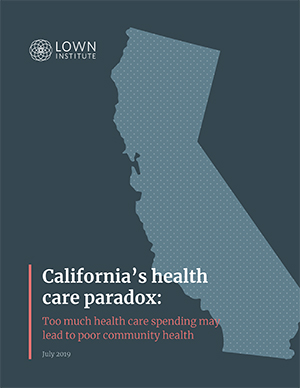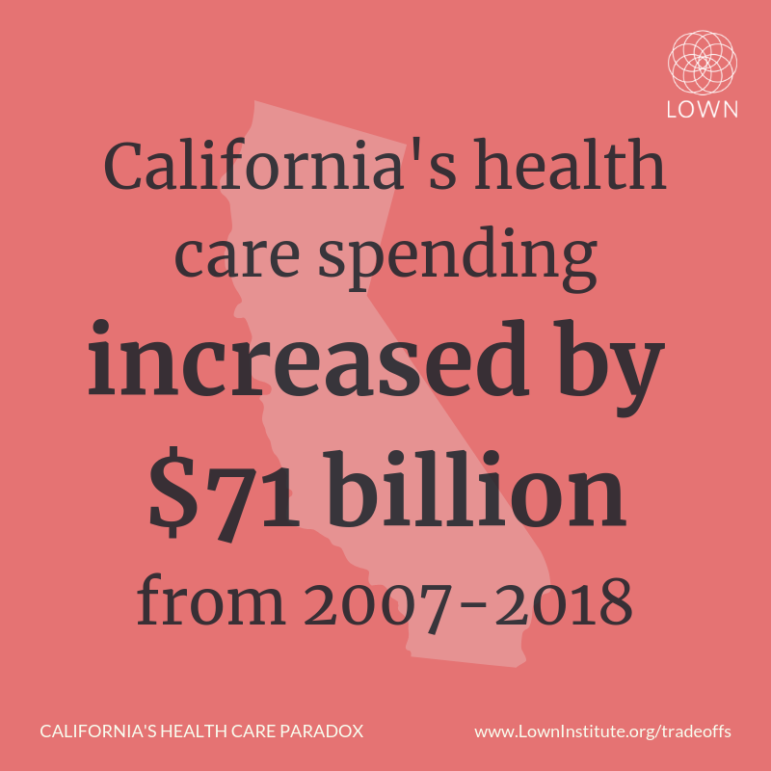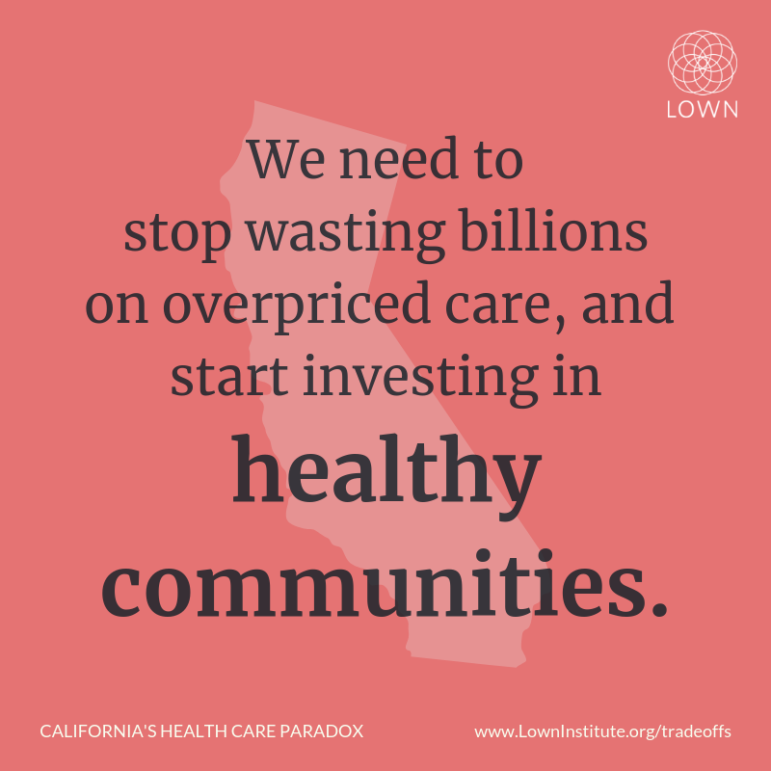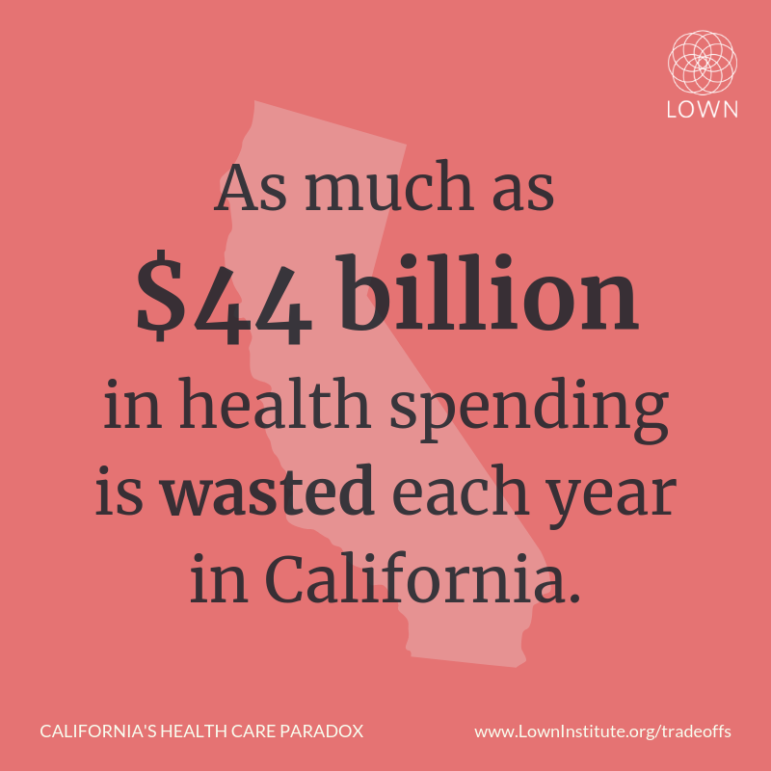California wastes billions on sick care, leaving little for community health
In a disturbing paradox, increased state spending on medical treatment may actually be leading to worse health conditions for Californians.
Analysis of California’s state budget from 2007 to 2018 finds that health care spending has skyrocketed, leaving fewer dollars to fund programs and services that support health and prevent illness at the community level.

Report
California wastes billions on sick care, leaving little for community health.
As investments in community conditions lag, millions of Californians continue to suffer from chronic health care problems, high infant mortality rates, and lower life expectancy, brought on by toxic air and water pollutants, poverty, food deserts, lack of affordable housing, and low levels of formal education.
While some health care spending has been put to good use expanding coverage, billions of dollars are wasted on overpriced services, low-value care, and administrative inefficiencies.
To ensure the long-term health of the state, California needs to eliminate health care waste and direct the savings toward increased funding for programs that improve community conditions—like public education, public health, housing assistance, food assistance, and income support.
Not only does spending on social programs make people healthier, but these investments pay for themselves many times over, through more productive workers, fewer emergency room visits, and a reduction in unnecessary hospitalizations.
This project was supported by funding from Well Being Trust, a national foundation bringing together clinical, community, and policy innovators to advance the mental, social, and spiritual health of the nation.
Suggested Citation: Brownlee, S., Saini, V., Garber, J. California’s health care paradox: Too much spending may lead to poor community health. Brookline, MA and Oakland, CA: The Lown Institute and Well Being Trust. July 2019.




